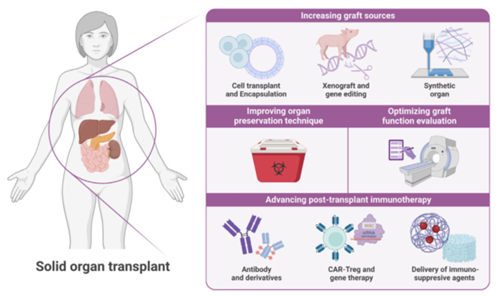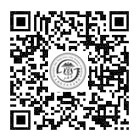Recently, a review has been published online onMed, a flagship clinical and translational research monthly journal byCell. This review is co-authored by two teams: one is led by Professor Xia Qiang from the Department of Hepatic Surgery of Renji Hospital, Shanghai Jiao Tong University School of Medicine, Shanghai Institute of Transplantation (the leading research institute), and Shanghai Engineering Research Center of Transplantation and Immunology; and the other is led by Zuo Xiaolei from Institute of Molecular Medicine,Shanghai Jiao Tong University School of Medicine. The application of synthetic immunology and biomaterials in solid organ transplantation (SOT) is systematically reviewed. A special focus is placed on the active interface between transplant immunology, synthetic biology, and material science. The interdisciplinary approach is expected to increase graft sources, improve organ preservation techniques, optimize immune monitoring and post-transplantation immune modulation, and promote the development of new cell and gene therapies.
Post-transplantation immune modulation, especially the use of immunosuppressive agents, is critical to reducing post-SOT graft loss and patient mortality. The traditional immunosuppressive regimens focus on CNI-mediated inhibition of T cell activation, while the intricate and dynamic immune responses mediated by other components remain unsolved.

Emerging advances in synthetic biology and material science have provided novel immune modulatory tools for reshaping post-transplantation immune homeostasis. These developments are expected to cover the whole SOT process and elevate the overall level of SOT.
The review discusses the progression and near-term translational applications of integrated tools from synthetic biology and biomaterials: one is to increase transplant sources and minimize immune rejection through artificial synthesis and gene editing; the second is to optimize organ preservation techniques to reduce ischemia-reperfusion injury (IRI); and the third is post-transplantation theranostic approaches for early and precise immune modulation. Finally, the review describes future opportunities and examine the limitations in this interdisciplinary domain hampering the potential routine use of these tools in SOT clinical practice.
The first author is Dr. Zhang Xijie receiving standardized training for resident doctors in Department of Hepatic Surgery of Renji Hospital, Shanghai Jiao Tong University School of Medicine; the corresponding authors are Dr. Feng Hao and Professor Xia Qiang from Department of Hepatic Surgery of Renji Hospital, Shanghai Jiao Tong University School of Medicine and Shanghai Institute of Transplantation.

